
NOTHING TO DO BUT EAT TACOS AND WIN.









NOTHING TO DO BUT EAT TACOS AND WIN.








9 Mesquite Apple Cider Cupcakes
rom Shade to Seeds, Fruits of he Ubiquitous Mesquite Tree
TEXAS MESQUITE BEAN

ersatile, Healthy … and Everywhere!
24 Iron Skillet Chicken, Caramelized Onions and Jalapeños with Creamy Garlic Cilantro Ranch Dressing
26 Chilaquiles
28 Quiche Two Ways
30 Texas Mesquite Chocolate Chip Cookies
32 L AST SIP
efs and Food Scholars Showcase
n Conversation with Las Huellas of
ON THE COVER: Foraged mesquite beans.
I have the fondest memories of helping my dad in the kitchen. My sisters and I grew up watching him, learning to clean oysters, how to store fruits and veggies correctly and most of all, discovering the recipes of his youth. For this issue he gave up a secret family recipe. His quiche is the best I have ever had in the States or in France! It’s cheesy, has a lot of whatever filling you choose and is creamy versus eggy. As a kid I helped mix the eggs, cream and milk, and of course it required a taste test to make sure it was just right. In this issue we choose to feature a vegetarian version and a play on the traditional quiche Lorraine. This is his mother’s recipe, which is easier and more economical. I hope you enjoy it!
I hope our other recipes will spark memories for you. Chilaquiles was not a staple in our home given our French roots, but for most of you, I am sure you have fond memories. Brownsville native, Chef Joseph Gomez, of Con Todo in Austin, shares his take on the dish that he serves his family. The sauce is delicious, the smoky notes are well balanced and the morita chile adds smoke and sweetness. It’s also not spicy, which I love, since I am a chicken when it comes to spice.
It is always exciting when Melissa Guerra contributes a story and recipes. She has a new podcast called The Kitchen Wrangler, which is chock-full of food facts, food history and general food knowledge. If you’re a food nerd like me, you will eat it up! From noodles to Montezuma addiction to chocolate to whether Jesus ate frijoles, she covers it all. In these pages, Melissa gives a history lesson on what the mesquite tree has meant to this region and how versatile it is. Her chocolate chip cookie recipe is a staple in everyone’s kitchen, and its use of mesquite flour makes it very RGV. In her skillet chicken recipe, she is right on trend in using tofu as a way to add protein and thicken her ranch recipe.
Denise Cathey brings us a story on the Cappadona family, who embraced what the land provided on their ranch and how they are going back to the roots of the Valley and producing products that are both healthy and tasty. In the 956 we have all seen the mesquite trees and have definitely used the wood to barbecue, but those bean pods, who knew you could make mesquite flour out of them?
Staying true to our RGV roots is what Las Huellas of South Texas has been doing for almost 20 years. It started when a group of guys got together to conserve the wildlife they grew up with, for their kids. Las Huellas is known for throwing a killer party. They do so to raise money for the many causes they pursue in their work to preserve the beautiful habitat that is the South Texas paradise.
Letty Fernandez, our editor, and I had the pleasure of attending Encuentro, and it was such an inspiring summit. We heard chefs’ stories of how the cuisine they grew up with inspired them as chefs and how they are honoring their roots every day in the cuisine they prepare. The scholars also provided a mini anthropology and history lesson where I learned that our area was one of the few places to get salt, which was a major trading staple. The people of the Valley have always been foodies; maybe that’s why food is a love language here. The chefs were tasked with creating a dish from our region and using local ingredients. When we tasted what they cooked, we felt those emotions and stories the chefs told us. It was an amazing experience.
Bringing this magazine to you has been an honor. We have really enjoyed discovering the various stories we tell and meeting the people behind them. What are some stories you would like us to tell? Who in your community is contributing to local food culture or expanding the local food economy? And of course, none of this would be possible without our advertisers. We thank them for helping us bring this magazine to the RGV. To our readers, please show your appreciation by supporting them.
Have a wonderful fall season, and I look forward to a great harvest!
PUBLISHER
Jacqueline Folacci
EDITOR
Letty Fernandez
PHOTO EDITOR
Daniela Loera
CONTRIBUTORS
Ricardo Addobati
Victoria Barrera Cappadona
Denise Cathey
Josh Ennis
Michel Folacci
Joseph Gomez
Melissa Guerra
Adan Medrano
PHOTOGRAPHERS
Denise Cathey
Daniela Loera
Benito Treviño
LAYOUT DESIGN
Matthew and Tina Freeman
COPY EDITORS
Doresa Banning
Marci Caltibiano-Ponce
Cristina Tijerina
ADVERTISING
advertise@edibleriograndevalley.com
CONTACT US hola@ediblergv.com
TO SUBSCRIBE
Visit us online at edibleriograndevalley.com
edible Rio Grande Valley is published quarterly by GC Publishing LLC. Subscription rate is $28 annually.
No part of this publication may be used without written permission of the publisher. Every effort is made to avoid errors, misspellings and omissions.

If, however, an error comes to your attention, please accept our sincere apologies and notify us at hola@ediblergv.com. Thank you.
©2023. All rights reserved
edibleriograndevalley.com
Jacqueline Folacci Publisher


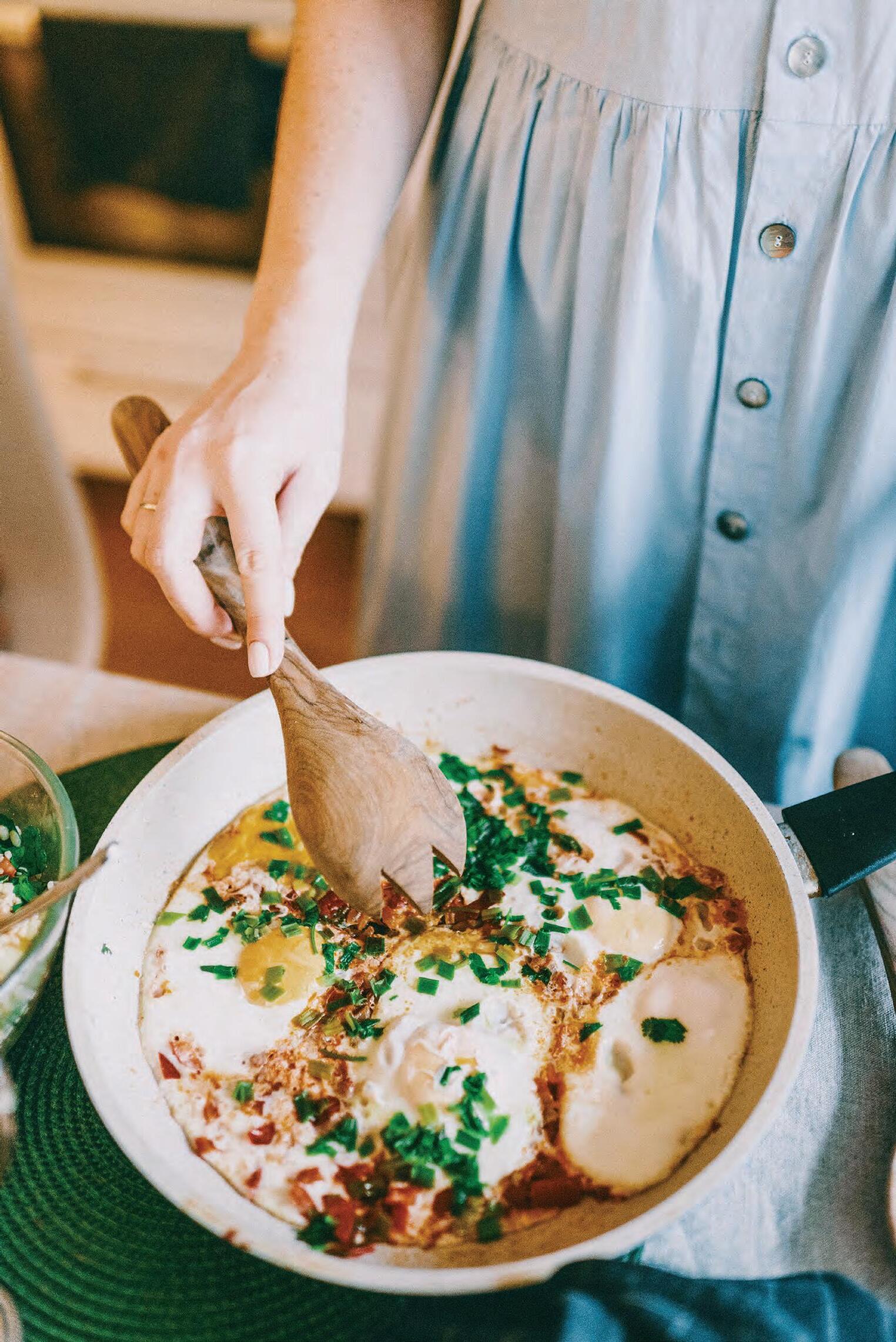
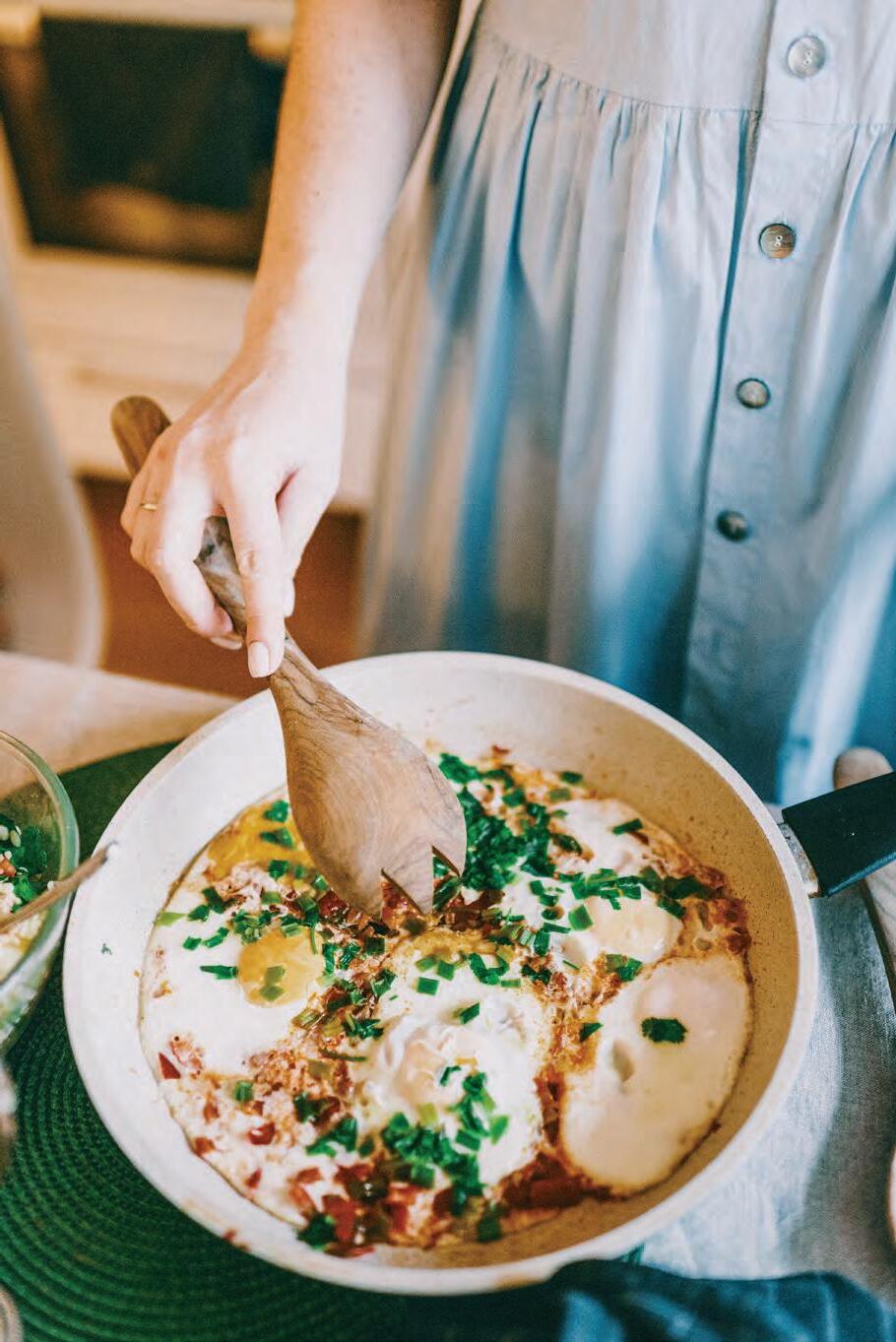


There is no other tree in South Texas as iconic as the mesquite tree. Without mesquite tree shade, our Rio Grande Valley temperatures would be unbearable. Without mesquite wood, our South Texas carne asadas wouldn’t be famous. Without sweet, starchy mesquite seed pods, the tribal clans of the Rio Grande delta would not have thrived.

Perhaps I am going out on a limb (pun intended) but I believe everyone who lives in the Valley has a personal mesquite story. My personal mesquite story involves a pony that I used to ride when I was a kid. The only way I could catch this pony was by tempting her with sweet mesquite beans. One day I went for a ride, and the pony figured out I hadn’t brought any mesquite beans, or seed pods, with me. She dumped me on a caliche road and trotted back home for dinner.
Within the region covered by area code 956, whether we live in the country or in town, a mesquite tree is always within sight. Our local variety of mesquite tree is known scientifically as Prosopis glandulosa or honey mesquite. Because of the seed pods that grow on the tree, the honey mesquite is classified in the Fabaceae family of flowering plants, which means it is a legume.
I have often wondered about mesquite tree population in the Rio Grande Valley before our area was colonized by Spanish settlers. Some experts theorize that the prehistorical Valley was a vast semi-arid grassy plain and that the arrival of colonial cattle herds caused a proliferation of mesquite trees. Back in the days before ranch fences were built, cattle ate mesquite beans and left mesquite seeded piles of fertilizer wherever they roamed.
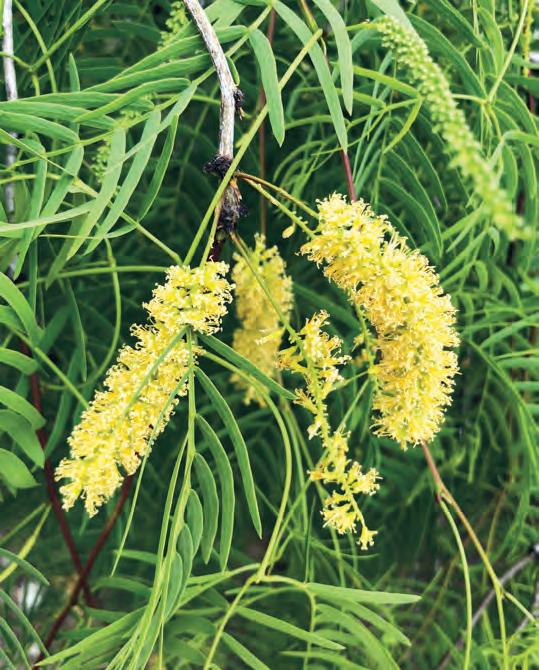
Other archeological source books insist that the Valley was covered with dense mesquite forests, which gave us abundant wildlife. So which theory is correct? Before the colonists arrived, did the Valley have a lot of mesquite trees or a few? I decided to ask Benito Treviño, who, along with his wife Toni, owns Rancho Lomitas Native Plant Nursery in Starr County and is an expert on South Texas native plants.
“I believe there were dense motts of mesquite trees while other areas of the Rio Grande Valley remained as grassy plains,” says Treviño. “The landscape varied depending on where you were.”
Treviño shares how his college ecology professor had his students collect information about mesquite trees in the region, which he amassed for decades. “Eventually he discovered multiple trails of non-local mesquite trees that marked the historical routes taken,” relays Treviño. “Even though there was no evidence of colonial trails left by the settlers, the mesquite trails left by the cattle clearly marked their northward routes.”
When he was a child, Treviño’s family harvested mesquite beans on their ranch in Starr County. They roasted the beans on fires they built in sandy locations. “The fires were managed and formed into circles,” he explains. “Once the fires burned to embers, the mesquite beans were added to the circle. The embers warmed the sand, which in turn gently roasted the mesquite beans.”
Gooey, amber-colored sap naturally weeps from the bark of the honey mesquite, which was of great use to the Indigenous tribes of the Rio Grande Delta. The sap, called chahuite, can be used as an adhesive or binding agent. I heard that tribes used chahuite as a glue when making hunting arrows. Also, Treviño says, tribes used the burnt pulverized bark of the mesquite tree mixed with chahuite for marking their skin. “I tried it on my face one time to see how long it would last,” he says with a chuckle. “After three days the marks started to break up, and I washed them off after five days.”

Treviño has visited Indigenous dwelling sites where stone mortars had been carved into boulders. He assumes these mortars were used for making mesquite flour by the tribes. “I was amazed how quickly and efficiently these prehistoric mortars could grind mesquite beans,” he says. “It was so much faster than my electric food processor.”
Melissa Guerra is an eighth generation Texan, born, raised and currently living on a cattle ranch in South Texas. She loves food, is a self-taught culinary expert and food historian and cookbook author. She has spent years learning the food ways of the American continent, especially Texas, regional Mexican and Latin American cuisine. She is an active food blogger and recently started a food history podcast on YouTube. Follow her at kitchenwrangler.com.
“Within the region covered by area code 956, whether we live in the country or in town, a mesquite tree is always within sight. Our local variety of mesquite tree is known scientifically as Prosopis glandulosa or honey mesquite.”Left: Mesquite sap. Right: Mesquite tree bloom that turns into a bean.

Riding in the rear passenger seat of a UTV nicknamed The Beast, as the sun begins its slow slide to the horizon line, Victoria Barrera Cappadona points out likely targets to me in our evening hunt. In front, her husband Justin pilots the vehicle through waves of tall grass and along worn paths that crisscross fields and thickets on the Cappadona Ranch. Occasionally a deer or rabbit darts past as the vehicle journeys across sections of the 2,400 acres that make up the family property in Linn, Texas.
While a rifle is nested in the center console, the game we’re hunting is not what you’d expect; it’s mesquite trees.
The bane of Texas ranchers and farmers, mesquite trees carry a bad rap in the state. Known as the devil with roots, the devil’s root, a noxious pest and water thief — it’s a tree with a thorny place in the hearts of landowners. However, at the core of Cappadona Ranch, the metaphorical bark is peeled off to reveal the once omnipresent and vital resource stretching over the centuries — when mesquite trees were a part of the daily life and diet of the state’s inhabitants.
McAllen native Victoria became an unlikely champion of mesquite through her business, Cappadona Ranch, on the Cappadona family ranch lands. With the beans of mesquite trees, she makes jellies, flour, caffeine-free coffee, tea, soaps and lotions, products she developed and honed over the years.
As she tells it, 13 years ago, a drought changed how she looked at mesquite trees forever.
“Back in 2012, we were going through a heavy drought, and the land was barren and dry. My fatherin-law had come in and said to me, ‘Everything is yellow and dead — except the mesquite trees,’” she recounts.
Cappadona wondered if there was any use for the trees, which seemed to flourish despite everything. Her father-in-law, Fred Cappadona, shared with her that a neighbor down the way would take the long bright golden seed pods the plants produced and make mesquite bean jelly with them each year for Christmas.

With the family property stretching over 2,000 acres and full of mesquite trees, Cappadona did her homework and found this project that, at the time, seemed an ideal activity for her and her young family to take on. Eventually, in 2015, her husband suggested it might just be the moment to take her time-tested jelly to the people as a business. At the time, she had no idea how this decision would thrust her into years of discovery into the once widely known uses and concoctions made using the mesquite tree’s beans.
For the uninitiated, it may seem strange that the tree’s beans are, in fact, edible, and certain varieties are even famed for producing sweeter beans than oth-
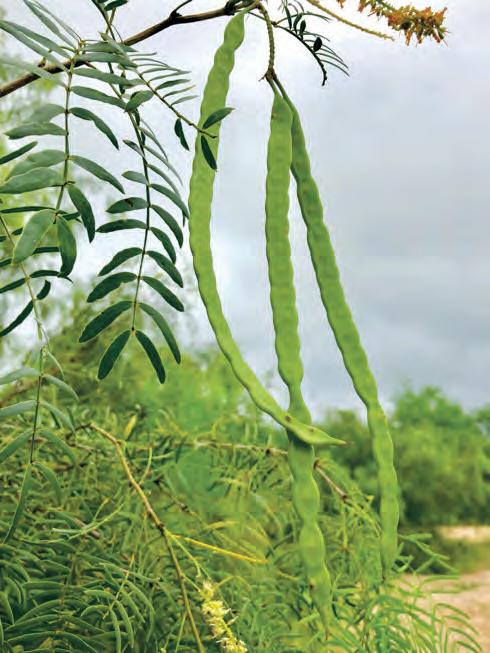
ers — like the honey mesquite which grows across the ranch. It does take some doing to get to the center of a mesquite bean, as Cappadona can attest. Without their ranchs’ hammer mill to crush the outer hull surrounding the meat, she says the hulls are likely to crack teeth.
While Cappadona had to research how to work with mesquite beans, these skills would have been fundamental knowledge to the Indigenous people in

“Back in 2012, we were going through a heavy drought, and the land was barren and dry. My father-in-law had come in and said to me, ‘Everything is yellow and dead — except the mesquite trees.’”
areas where mesquite flourished. Spanish explorer Álvar Nuñez Cabeza de Vaca, while stranded on the Gulf Coast, recorded in the 16th century seeing them prepare mesquite beans.
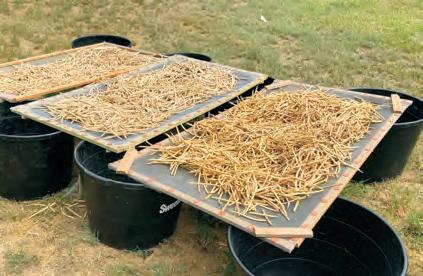

As translated by Fanny Bandelier, de Vaca described:

“They brought us their children to touch, and gave us much mesquite-meal. This mezquiquez is a fruit which, while on the tree, is very bitter and like the carob bean. It is eaten with earth and then becomes sweet and very palatable. The way they prepare it is to dig a hole in the ground, of the depth it suits them, and after the fruit is put in that hole, with a piece of wood, the thickness of a leg and one and a half fathoms long they pound it to a meal, and to the earth that mixes with it in the hole they add several handfuls and pound again for a while. After that they empty it into a vessel, like a small, round basket, and pour in enough water to cover it fully, so that there is water on top. Then the one who has done the pounding tastes it, and if it appears to him not sweet enough he calls for more earth to add, and this he does until it suits his taste. They all squat around and every one reaches out with his hand and takes as much as he can.”
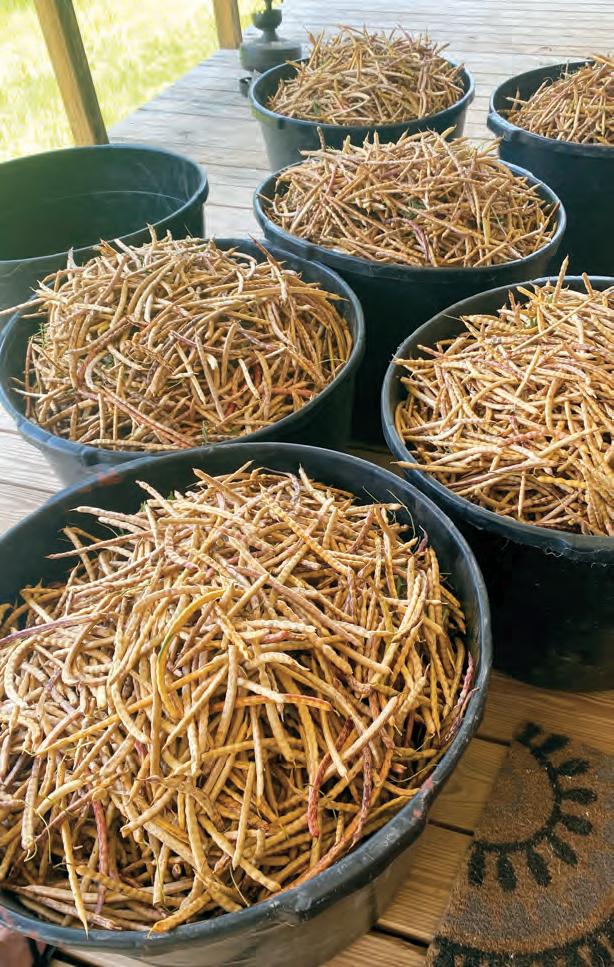
Today, Cappadona’s mesquite bean flour has the added benefit of being gluten free, being high in protein and having a low glycemic index. With a natural sweetness, the flour is perfect for baked goods and as a healthier sweetener for diabetics or those wanting to cut back on sugar.
In the future, Cappadona hopes more people can see mesquite trees the way she does — as a healthy resource that deserves more credit than tales give it.

“You can’t get rid of it, and it’s going to be here to stay. So we might as well make use of it. If it’s healthy and it is good for you and is all around us in Texas — we gotta share,” Cappadona says.
Denise Cathey is a reporter and photojournalist living in Houston, Texas. A native Texan, she has an ingrained love of whiskey, BBQ and the truly odd. Currently, she’s on a quest for the ultimate al pastor. Follow her on Instagram @denisecatheyphoto.
“As the weather finally starts to offer breezy evenings and cooler mornings, giving us a much needed break from our Texas summer broil, the much welcomed smell of apple harvests entices our cravings for everything fall to come out to play!
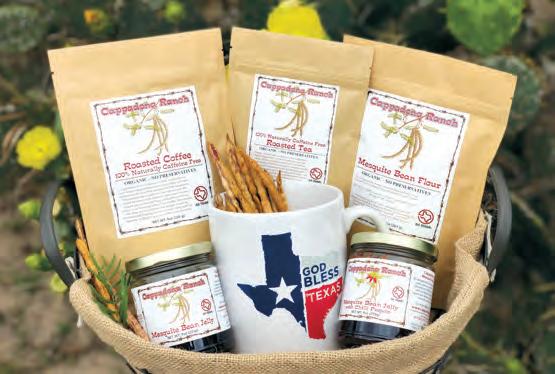

Though the start of our Texas autumns never calls for sweaters, it does awaken our need to visit pumpkin patches and pick apples and the craving for spicy, sweet treats that do more than just satisfy our sweet tooth, but conjure cozy, fun memories of fall. So, kick up a few leaves with our incredibly delicious mesquite apple cider cupcakes.”
For the cake:
⅔ cup (113 g) brown sugar
⅓ cup (133 g) granulated sugar
¼ teaspoon (1.4 g) kosher salt
½ cup (118 ml) olive oil
½ teaspoon (2.5 ml) vanilla extract
3 large eggs
2 teaspoons (12 g) baking soda
1 teaspoon (6 g) ground cinnamon
¾ cup (94 g) mesquite bean flour
¾ cup (94 g) all-purpose flour
¾ cup (177 ml) apple cider
Preheat oven to 350° F. In a large bowl whisk brown sugar, granulated sugar, olive oil and vanilla.
Whisk in all 3 eggs, 1 at a time, until well blended. Add baking soda, cinnamon, ½ the mesquite bean flour, ½ the all-purpose flour and ½ the apple cider and whisk together. Then add remaining mesquite bean flour, all-purpose flour and apple cider and stir until well blended.
Add paper cups to muffin tin and fill with batter to ¾ full. Place in oven for 18 to 20 minutes, until center bounces back when lightly pressed with finger. Set aside to cool.
Add frosting to a Ziploc or piping bag and frost cupcakes. Decorate tops by sprinkling remaining 1 tablespoon of mesquite bean flour over them.
For the cream cheese frosting:
½ cup (113 g) unsalted butter, at room temperature
8 ounces (227 g) cream cheese, at room temperature
1 cup (125 g) powdered sugar
2 tablespoons (31 g) mesquite bean flour
½ teaspoon (1.4 g) cinnamon
2 tablespoons (23 ml) apple cider
In a large bowl, mix cream cheese and butter with an electric mixer until fluffy. Then add powdered sugar, cinnamon, apple cider, 3 tablespoons of mesquite bean flour and vanilla until well combined.
September – November
All Season
Beans
Bok choy
Broccoli
Carrots
Cauliflower
Cilantro
Fennel
Green onions
Kale
Kohlrabi
Lettuce
Melons
Mustard greens
Parsley
Radishes
Squash
Swiss chard
Turnips Zucchini
September and October
Cantaloupes
Honeydew melons
November
Beets
October and November
Beans
Bell peppers
Bok choy
Carrots
Chili peppers
Only September
Bell peppers
Brussels sprouts
Only October
Cabbage
September and October
Chili peppers
Cucumbers
October and November
Field peas
Mustard greens
Oranges
Radishes
Spinach
Squash
Sweet peppers
Tomatoes
Zucchini
Cilantro Cucumbers
Kale
Lettuce
Mustard greens Oranges
Radishes

Squash
Sweet peppers Tomatoes
Zucchini

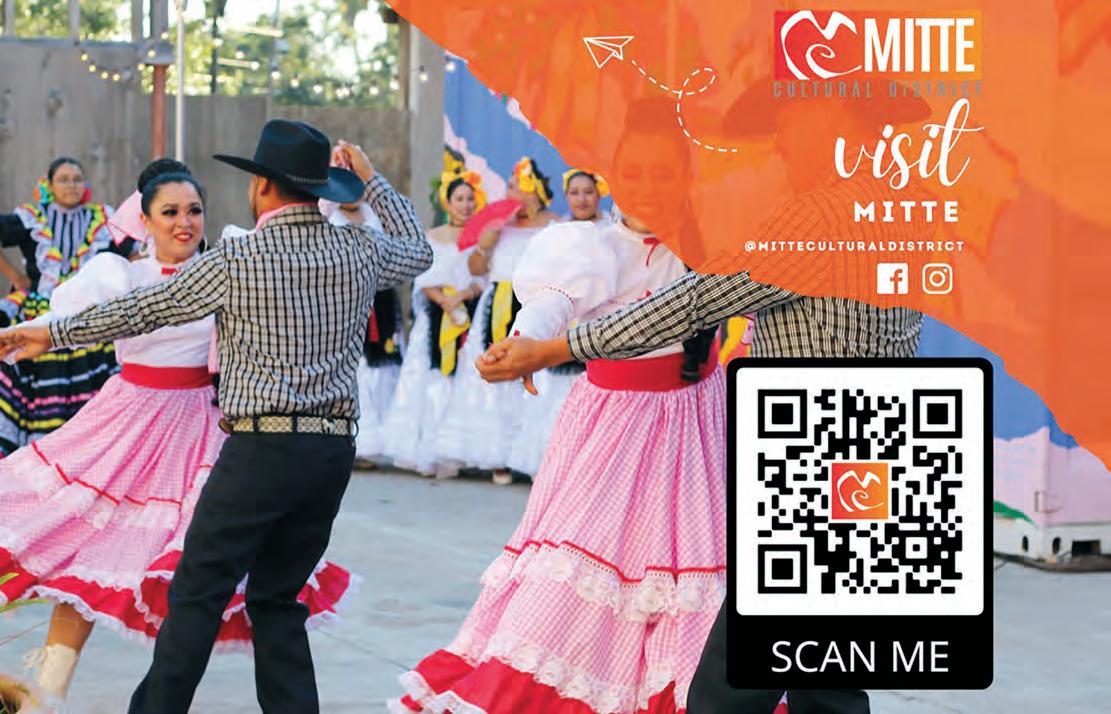

Brownsville
Brownsville Farmers Market
Linear Park, 1495 E. 7th St.
Saturdays 9AM-12PM brownsvillewellnesscoalition.com
@brownsvillewellnesscoalition
The Market at North Park Plaza 800 North Expressway 77/83
Opens October, every other Saturday 3-7PM marketattheplaza.com info@marketattheplaza.com
Donna Heart of the Valley Farmers Market
120 S. Main St.
3rd Saturday of every month 2-5PM @heartofvalleyfm
Edinburg
Hub of Prosperity Urban Farm
3707 W. University Dr. Saturdays 9-11AM openfoodnetwork.net @hub_of_prosperity
Harlingen
Harlingen Farmers Market
Tyler Avenue & 2nd St. Saturdays 3-4:30PM
Mid October-mid June harlingenfarmersmarket.com @harlingenfarmersmarket
HOPE Farmers Market
19833 Morris Rd.
Mondays & Thursdays-Saturdays 10AM-6PM yahwehfarm.com yahwehs.farmgarden@gmail.com @yahwehsfarm hopeforsfs@yahoo.com hopeforsfs.org
Wild August Nursery & Flower Market
16802 Garrett Rd.
October-May
Saturdays 9AM-12PM
June-September
Fridays 6-9PM wildaugust.com @themarketatwildaugust
Laguna Vista SPIGCC Community Farmers Market
South Padre Island Golf Course 1 Ocelot Trail Rd.
1st & 3rd Tuesday of the month
4–6PM
McAllen
Farm to Table Tres Lagos
Farmers Market 4350 Tres Lagos Blvd.
1st Sunday of every month 2-5PM visitmcallen.com
@treslagosmcallen
Grow’n Growers
Farmers Market
Firemen’s Park, 201 N. 1st St.
Saturdays 9AM-12PM visitmcallen.com
@farmersmarketatfiremenspark
McAllen Farmers Market 4001 N. 23rd St.
Saturdays 10AM-1PM mcallenfarmersmarket.com
@mcallenfarmersmarket
Mission
Neighborhood
Farmers Market
The Bryan House
1113 E. Mile 2 Rd.
Wednesdays 3-7PM
thebryanhouse.com
@thebryanhouse
Rancho Viejo
Rancho Viejo
Farmers Market
3301 Carmen Ave.
Every other Sunday
Sept. 5-8PM
Oct. 3-7PM
ranchoviejofm.com
@ranchoviejofarmersmarket
San Benito
El Pueblito Market
101 N. Reagan St.
2nd Sunday of the month
11AM-3PM
elpueblitomarket956@ gmail.com
South Padre Island
South Padre Island
Farmers Market
8605 Padre Blvd.
Sundays 11AM-1PM sopadre.com
Weslaco
La Cebollita Mid-Valley
Farmers Market
Weslaco City Hall
255 S. Kansas Ave.
Last Saturday of every month
11AM-2PM
@weslaco_chamber weslaco.com
Available CSAs in the RGV CSA, or Community Supported Agriculture (CSA), is one way consumers can directly support local farms. You connect directly with the farmer, and every week your farmer delivers or you can pick up a variety of fresh nutritious food. All CSAs have different financial structures and procedures, so we suggest you reach out to the CSA for more information.
CD&J Mini Ranch
Offers a produce CSA
Meat and egg CSA
29575 Adams Rd., San Benito cdjminiranch.com
@cdjminiranch_woman_owned
Nature’s Heartland Farm Offers produce and eggs
11920 N. Mile 16, Edinburg
Saturdays 10AM-4PM heartlandfarm.com
@naturesheartland
Sentli Center for Regenerative Agriculture
Offers produce CSA from Participants: Terra Preta Farm, Food Bank RGV, Vida Farms, The Hour Farm & Sunshine’s Bounty. Contact Shakera Raygoza to sign up, 956-472-7436
Valley Green Growers Cooperative (VGG)
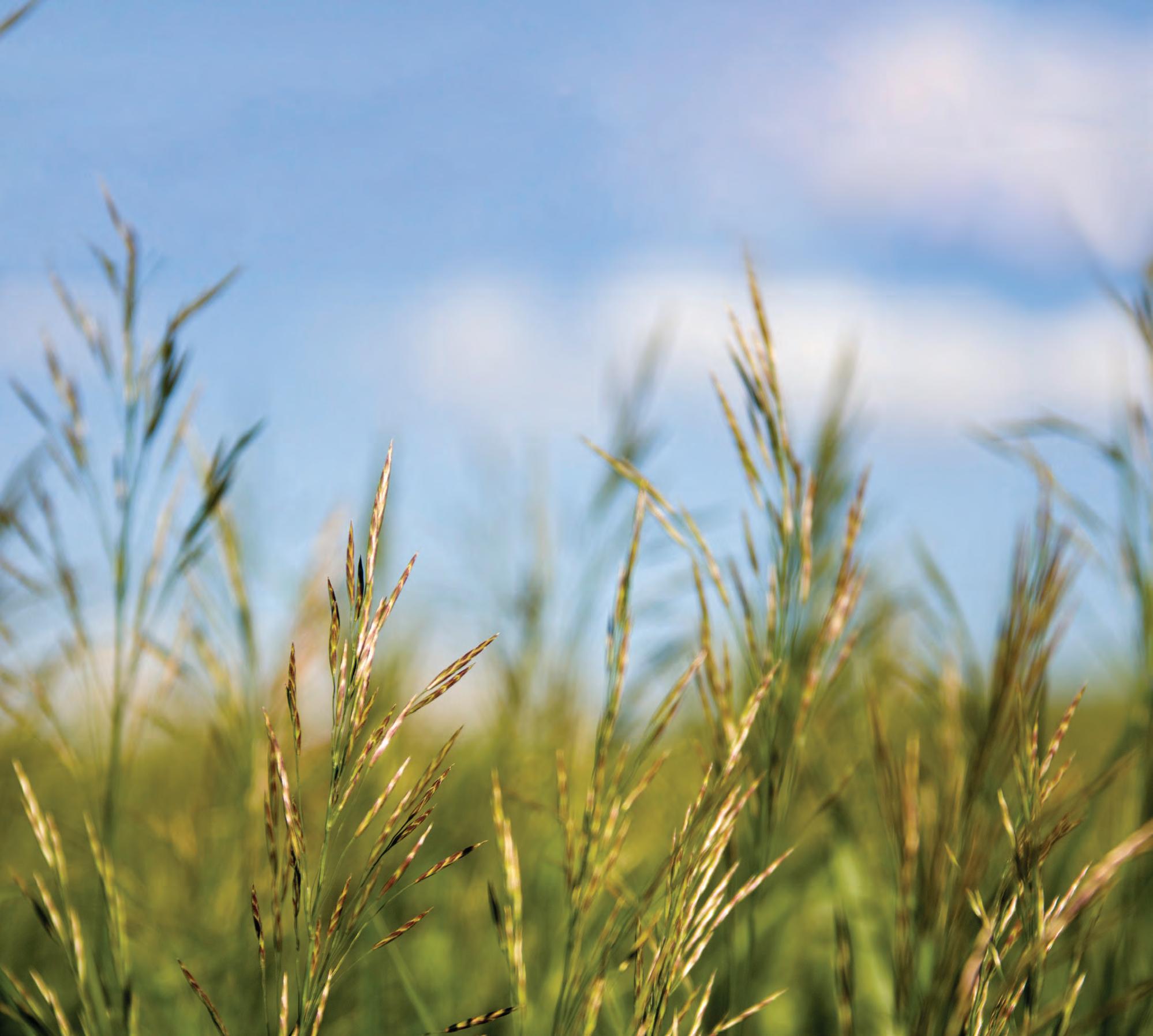
Offers fresh produce and protein boxes CSA
19833 Morris Rd., Harlingen vggcoop@hopeforsfs.org












Mexican American comida casera, home cooking, doesn’t just feed our body, it nourishes our soul. That’s what 10 chefs and four food scholars demonstrated and celebrated at the culinary event, “Encuentro: The Native American Roots of Texas Mexican Food,” held over two days in Houston. I had invited them to cook, tell their unique story and dive into the history and impact of Texas Mexican food over its 10,000-year history. The energy of what happened at Encuentro still resonates in my mind and heart.
The participating Mexican American chefs all have roots in south Texas and northeastern Mexico. They travelled from Dallas, Laredo, McAllen, San Antonio, Austin, Houston, Port Aransas and other cities in the state. Renowned food scholars, experts in the cooking that is unique to the Texas borderlands, joined them. My hope was that the chef-scholar group would come to Encuentro and see their common
purpose, common passion, and thus realize more deeply the importance of their work for all of us Texans.
More than 100 people were invited to join Encuentro, to taste the food, listen to the storytelling and ask questions. What resulted was a profound collective experience of Mexican American identity and sense of community. “This event was life changing for me,” says Imelda Alamía, one of the participants who is a Brownsville native but now a Houston resident. She said Encuentro “will assure that our stories, our foods, our beginnings are not erased or disregarded.”
The chefs cooked in three culinary showcases that relayed how our Mexican American community has confronted adversities and prevailed by creating a unique and influential cuisine that always has a story to tell.
The showcases encompassed meals fitting three themes: “Nature/ Nurture,” a dinner of south Texas quail, Gulf seafood and tamales made with the omnipresent mesquite pod; “Tradition/Innovation,” a breakfast that featured pecan-amaranth atole, chilaquiles con nopali-






tos and grape dumplings, a dish from the Caddo community called los Tejas, from which the state gets its name; and “Memory/Identity, “the lunch finale offering three mainstays of our rancho traditions: mollejas asadas, carne guisada and cabrito. Of course, all were served with variations of salsitas sabrosas.
Chef Nadia Casaperalta, who is from McAllen, wowed the participants with a clear dinner soup, consomé de conejo (rabbit), and verdolaga, and shared how her grandmother served her the dish when she was a child.
“I didn’t understand at the time how my grandmother could feed me my pet rabbit, yet the taste was insanely delicious. She had never prepared anything like this before, the Claudette so clear, meat so tender, carrots diced up beautifully,” she said. It was in culinary school that Nadia realized the difficulty and intention of a clarified consommé and brunoise carrots.
“The technique [my grandmother] passed down was not the actual recipe, but her intention to honor the animal if we are to consume it. I try to emulate that lesson in my culinary classes at South Texas College.”
For his specialty dish, Chef Bobby Gonzalez, from Laredo, first coldsmoked then roasted south Texas quail stuffed with his grandmother’s dried fruit stuffing. Accompanying it was a flor de yuca (pita) salad, tossed in a vinaigrette made with chapote, the small plum that is native to the Rio Grande Valley and hard to find elsewhere. Gonzalez put the evening showcase in clear perspective when he proclaimed that “my food tells the story of my family.”
Gonzalez has two restaurants, El Capataz and La Tabernilla. He lived and worked in New York City, cooking at the three Michelin star restaurant, Le Bernardin, but returned to Laredo to focus on his family. Family and tradition are important to him.
“I want to know more about the first people who were here,” he said, “what they ate, how they cooked.” So alongside his food, he presented an impressive tray of archaeological artifacts that he picked up while walking on his Laredo ranch. They included Native American arrowheads and cutting instruments that our ancestors chiseled from stone.
To emphasize that our food is seasonal and local before those two words were trendy among foodies, Gonzalez explained that in the month of May both yucca flowers and the chapote fruit are not in season. Showing his culinary creativity, he substituted endive for the yucca and used tunas from nopalitos for the sweetness of the chapote.
Chef Sylvia Cásares, a Brownsville native, is now the chef-owner of two Sylvia’s Enchilada Kitchen restaurants in Houston. She flipped hot fresh flour tortillas right on her mother’s actual comal, and handed them to the Encuentro tasters. Casares served carne guisada, the dish that is a favorite tradition of every Mexican American family, along with de rigueur frijoles pintos, arroz casero and wonderful salsa ranchera.

As she presented the iconic dish, Casares told of her struggles in preserving the flavors of the food that belong to “all of our mothers, grandmothers and aunts.” She said that her food is often pegged by food writers as Tex-Mex, but it is so much more because the flavors are different. “I sometimes felt like I was alone, but I know that there are many other chefs who love this food and champion it in their restaurants, keeping our traditions strong,” she added.
Encuentro was a feast for all the senses and the intellect. The four scholars spoke about the archaeology, history, politics and cultural processes that accompanied the evolution of Texas Mexican cooking from its earliest days, thousands of years ago. Dr. Leslie Bush explained the archaeological history of the comida casera that we enjoy today. Her lecture, “The Dawn of Texas Mexican Food,” began with ancestors during the pleistocene, or Ice Age, in Texas.
Dr. Mario Montaño, an Eagle Pass native and foremost food anthropologist, mapped out the history of Spanish expeditions in Laredo and all along the border. “You have to listen to the elders and don’t interrupt them when they are telling their stories about our food,” he said.
I was deeply moved at the richness of our history. Dr. Lilliana Patricia Saldaña explained in detail how, in the intimacy of our families, our mothers and grandmothers, fathers and uncles, passed on delicious culinary treasures to the next generation. Saldaña spoke from personal experience, and like the other scholar presentations, sparked conversations among the chefs and Encuentro participants.
I truly hope that we never forget the storytelling power of our food. At the Encuentro, cooking and storytelling were integral parts of a single experience. The specially cooked dishes were not plucked out of their natural context. They were not served as isolated objects or commodities that you can buy at the grocery store, all wrapped in plastic, arriving from who knows where.
Rather, the cooking was revealed as a cultural act, a family practice that gives meaning to our lives. In the Mexican American experience, cooking and storytelling are inextricably bound together.
It’s up to each of us to carry on what happened at Encuentro. It is important to show that our Mexican American comida casera does not just provide nutrition for our bodies. Our food holds the true story of who we really are.

Adan Medrano is a chef, researcher and president of the Texas Indigenous Project, the organization behind Encuentro. He has published two history/cookbooks on Texas Mexican Food and is the executive producer of the film, Truly Texas Mexican.
To listen to the conversations at Encuentro, visit texasindigenousfood.org/encuentro.
“It’s up to each of us to carry on what happened at Encuentro. It is important to show that our Mexican American comida casera does not just provide nutrition for our bodies. Our food also holds the true story of who we really are.”





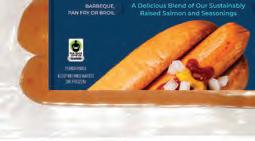
















In the September issue of Texas Monthly, three Rio Grande Valley restaurants made the list, The 25 Best New (And Improved) Barbecue Joints in Texas. Congratulations to Vargas BBQ in Edinburg, El Sancho Tex Mex BBQ in Mission and GW’s BBQ Catering Co. in San Juan. Writer Daniel Vaughn writes, “The Rio Grande Valley has gone from a smoked-meat afterthought to a place where I can fill a whole weekend checking out new spots.”

texasmonthly.com
One of our favorite contributors to Edible Rio Grande Valley is Melissa Guerra . She is an active food blogger and you can find her on various social media platforms. Her latest project is a podcast, in which she explores the history of food in the kitchen and speaks with chefs, food historians and food activists. Listen in at @KitchenWranglerPodcast on YouTube.
kitchenwrangler.com
The McAllen Independent School District and its S.T.R.I.D.E.S. program have received the Innovation in Education Award from the Texas Restaurant Association, the nation’s largest restaurant association. The award, which is new this year, recognizes individuals, groups and organizations that have demonstrated a commitment to innovation and excellence in the field of culinary and hospitality education.
The owners and staff of Boqueron Tapas + Wine are thrilled and honored to receive an Award of Excellence from Wine Spectator, the world’s leading authority on wine. This award is bestowed upon establishments that offer a diverse and well-curated list of at least 90 wines that pair well with their cuisine and overall experience. Boqueron is in the heart of downtown Brownsville in Market Square, next door to Las Ramblas. boqueronwinebar.com
Teddy’s Barbecue of Weslaco and BarbsB-Q of Lockhart, which has ties to the Rio Grande Valley, were featured in The New York Times article, “Texas BBQ Is the Best It Has Ever Been,” written by Brett Anderson.
Joel Garcia and his family opened Teddy’s Barbecue in 2020, and two of the three owners of Barbs-B-Q, Alexis Tovías and Chuck Charnichart, grew up in Brownsville. If you missed the article, make sure to read it. The story will make you feel RGV proud, and you will get a craving for some barbecue.

teddysrgv.com barbsbq.com
Know someone who should be in Notable Edibles? Send us a note at letty@ediblergv.com.
Over the years I’ve heard about the Las Huellas Association of South Texas and how it all started, to conserve wild turkeys in South Texas. A group of friends came together to preserve the natural beauty, wildlife and environment for future generations. They also throw a great party!


For this conversation, I sat down with Ricardo Adobbati, one of the founding members, at Karma Coffee and Books on South Padre Island. We could’ve talked for hours given I’m a
bit of a novice when it comes to our local wildlife. I appreciate it, and I am grateful I get to live in this paradise after being in the concrete jungle that is New York City for over 10 years, but I was unaware of how the area here has changed over the years and what needs to be done to preserve it for future generations. I encourage you to visit Las Huellas’ website. In my conversation with Ricardo, we really only scratched the surface as to the impact the association has on our community and learning all it does to help protect the outdoors. I hope you enjoy the read and follow in its footsteps.
Q: When was Las Huellas of South Texas established?











Over 17 years ago. Originally it was established under the National Wild Turkey Federation. Our original board members, many of which are still involved, wanted to raise money to re-populate wild turkeys in the area. We felt the best way to do it was through a nonprofit.

We realized pretty quickly we were limited with a national organization. Too many requirements and administrative issues. Very little of the money raised was returned to us for use locally.
I suggested to the rest of the board members we should just make Las Huellas our own independent nonprofit organization.
We keep our name and logo, but let’s create our own local nonprofit which we could broaden to cover all of our local wildlife. It also allows us to support local projects and what is best for this area. We did it … and we never looked back.
Q: What does Las Huellas mean?

“Huella” means fingerprint or track in Spanish.

Our logo is the footprint, the “track” of the turkey. Our mission is to preserve South Texas wildlife and to educate the people about the wildlife we have in South Texas.


We have a wonderful, diverse environment and many people don’t realize what we have down here. Our goal is to educate and raise funds so Valley residents are aware of our wildlife and to respect what we have down here. The variety of wildlife we have locally is incredible. Not all of our residents are aware of the world class birding as well as a diverse animal population, from ocelots to the nilgai, an antelope originally from India.
Q: How has the mission of Las Huellas expanded? We went from raising money to increase the turkey population to supporting wildlife research programs, doctoral programs, awarding scholarships to students interested in wildlife studies and supporting other local endeavors whose mission is to educate the public and expose the children to outdoor activities. We are proud to have recently started an endowment at UTRGV for a wildlife biology program at the university.
As an example, we even had a Ph.D. professor from India come down to study the nilgai. They were interested in our data so they could apply it in their own country. We have also worked with several other foundations in the area for ocelot, white-tailed deer and other wildlife. We have expanded tremendously since we started.
Q: In January, the Las Huellas Association created a scholarship endowment at UTRGV in the amount of $500,000 to establish a wildlife biology program and provide scholarships to students pursuing wildlife studies. Tell me about that.
We have wildlife biologists, wildlife management, farm management and ranch management positions that need to be filled. The Valley has plenty of smart, intelligent people to handle these studies, but they may not necessarily have the economic means to study elsewhere. We can have people study here, learn here, intern here and ultimately stay here. We are really excited about this. It was a big step establishing the endowment. It’s the biggest step we have taken recently.
Q: Educating future generations, is that part of your mission? Yes, we have a youth hunter program we put on every year in cooperation with the state of Texas. Kids have to take a youth hunting course before they are allowed to hunt. They learn about hunting rules, shooting safety and to respect the outdoors. We have sponsored Boy Scout camps, school programs, anything that falls within our mission statement. The list is quite long.
We are also associated with another group called Hooked for Life – Kids Gone Fish’n, which was started in Las Huellas by a dear friend of ours, David Mendez. He was a founding board member and unfortunately passed away. He loved that project, and we continue to support it to this day. We populate local resacas with catfish for their annual children’s fishing tournament. We want to expose kids to fishing, in some cases for the first time. We continue to support the event to honor him as well as the fact that it is a wonderful cause.
Q: Las Huellas is also well known for its very successful fundraising events. What is the key to your success? That’s easy, our loyal supporters. Thanks to them, we raised over $380,000 last year. It’s amazing how people and businesses support







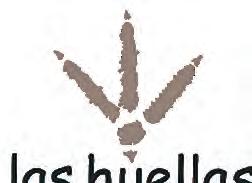
our events through attendance or providing donations year after year. They believe in us and know every penny raised goes to our programs. No money is wasted on administrative expenses. Our board does this because we love the cause; it’s that simple. Word is catching on about Las Huellas and the work we support.
Our events are also fun. The people that come are of course hunters and fishermen, but we have expanded hugely. People from all walks of life attend. The events are not fancy, just great food and entertainment. People feel relaxed and enjoy themselves. People realize that what we do preserves the wildlife and our environment. Everyone benefits.
Q: What work of Las Huellas are you most proud of?

I would say our support of wildlife research, the nilgai and ocelot studies. I can easily get into this but this interview would last a long time.
The nilgai research could potentially provide a global solution to the fever tick issue in wild animals that carry the tick. We are making efforts. We have the support from the local ranches, and we are proud to be part of this research.
Our scholarship endowment with UTRGV is a huge step for Las Huellas. Our organization is very excited about this partnership and the long-term goal of creating a Wildlife Biology Institute at UTRGV.
In our 17 years, we have given dozens of scholarships to many students interested in wildlife and environmental studies. We have already begun to see the benefits. For example, every year we honor the Texas Parks & Wildlife Game Warden of the Year. The winner last year was the recipient of one of our scholarships 13 years ago. We see the impact. It literally has come full circle.

There is a saying we have used in our promotional materials: “We are measured by the tracks we leave behind.” I think our organization is doing a great job at following that mantra.
Ricardo Adobbati has been a board member of Las Huellas for 15 years. To learn about Las Huellas of South Texas, visit lashuellas.org.








 Recipe by Melissa Guerra, Kitchen Wrangler Serves 4
Recipe by Melissa Guerra, Kitchen Wrangler Serves 4
“Surprise! Healthy can be tasty! This recipe checks all the boxes when looking for a high-protein, low fat, dairy-free, gluten-free meal. I love serving this dressing and chicken alongside fresh arugula or salad greens, steamed asparagus or roasted Brussels sprouts. Did I mention it’s a one-pan meal too? Yep. The only thing this dish doesn’t do is its own grocery shopping. This one is a keeper.”
For the chicken, onions and jalapeños:
1 pound (500 g) chicken thighs
Salt and pepper to taste, or your favorite seasoning mix
2 tablespoons (30 ml) olive oil
1 large onion, sliced
2 to 3 fresh jalapeños, sliced
Prepare the uncooked chicken by seasoning with salt and pepper or your favorite seasoning mix.
Place the olive oil in a cast iron skillet. Add the onion and jalapeño and brown for 1 to 2 minutes.
Add the seasoned chicken thighs, placing them skin side down.* Cover and simmer over medium heat for 10 minutes.
Remove cover from pan and turn the chicken pieces over. Allow the chicken to cook another 5 to 8 minutes until an inserted meat thermometer reads 165° F (74° C). Remove from heat.
Serve with Creamy Garlic Cilantro Ranch Dressing and a green salad.

For the dressing:
Makes about 2 cups
1 pound (500 g) soft tofu, drained
2 cloves garlic, peeled
1 tablespoon (9 g) nutritional yeast
2 tablespoons (30 ml olive oil
2 tablespoons (30 ml) apple cider vinegar
1 teaspoon (6 g), or to taste salt
1 tablespoon (7 g) coarse ground pepper
1 teaspoon (2.4 g) onion powder
1 ounce (28 g) fresh cilantro, finely chopped
Place tofu, garlic, nutritional yeast, olive oil, apple cider vinegar, salt, pepper and onion powder in the container of a blender and blend until smooth. Stir in chopped cilantro.
*Chicken Cooking Tip from Melissa: You have two options when cooking this chicken: uncover or cover with a lid.
I rarely cover my iron skillet when I pan sear chicken. Adding the cover turns the iron skillet into a steamer, and the resulting texture of the chicken skin is more tender. When cooking without a lid, the pan searing dehydrates the chicken skin, giving it a crispy, bacon-like texture, my personal fave.
The problem with not using a lid is that the grease particles splatter and cooking aromas float throughout your house and linger. Over my kitchen stove, there is an extractor fan the size of a Volkswagen, so I never worry about the scent of cooked chicken haunting my living room. So, if you want to reduce aromas and splatter, and to achieve tender chicken skin, cover the cooking chicken. For crispier chicken skin, follow the same cooking directions without covering the pan, but make sure to turn on the stove extractor fan.
If, for dietary or other reasons, you need to remove the chicken skin before cooking, opt for the covered pan method to keep the chicken juicy.
“Chilaquiles can be a valuable dish. It’s great to make if you have leftover tortillas so they do not go to waste, [especially] if you are on a budget like we most often were growing up. For my family, being able to stretch a tortilla to have an abundance to feed everyone was important, so this dish, like many others, has a special meaning. I hope you enjoy it as much as I did.”
8 morita chiles, cut in half and de-seeded
2 ancho chiles, cut in half and de-seeded
2 Roma tomatoes
½ white onion, peeled
4 cloves garlic, peeled
1¼ cups (300 g) good chicken stock
Salt to taste
8 corn tortillas, cut into quarters or triangles
2 quarts (1.9 l) peanut or canola oil, for frying (amount varies depending on size of pot)
1 8 ounce (227 g) bottle crema Mexicana
1 bunch fresh cilantro, roughly chopped
1 red or white onion, julienned
Queso fresco for topping
2 eggs (optional)
For the salsa roja:
To make the salsa, start by getting the comal, cast iron skillet or sauté pan hot on medium-high heat. The salsa can pop when you start cooking so beware.
Once the dried chiles are de-seeded, add to the pan and toast them until they are fragrant or start to blister and get soft, about 2 to 3 minutes. Be sure to move them around. Make sure to not completely burn the chiles.
If you have access to an open flame or a grill, feel free to char and cook the veggies. One of the many reasons I love Mexican cooking is I can burn things!
Once all veggies are charred and cooked, add the whole tomatoes, garlic and onions to the pan at once or in batches as needed. To know when they are done, I like to make sure the tomatoes have a very nice char on the outside on all sides and the skin is blistered. The charring will also add a nice depth of flavor.
Place all charred ingredients in blender with the chicken stock and blend until fully puréed until smooth. Add salt to taste. The salsa should coat the back of a spoon but not be watery. Pour into a container and let rest.
To prepare the totopos:
You can make your own corn tortillas or purchase them freshly made from your local tortilleria.
Add oil to a stock pot for frying that has high sides so the oil does not splash out. Approximate the amount of oil by making sure the tortilla squares can be submerged.
Add oil and heat to a temperature of 350° F.
Once oil is heated to the temperature needed, add cut tortillas. Move the tortillas around frequently, and cook for approximately 1 to 2 minutes. They can be cooked in batches, depending on the size of the pot.
You are looking for a crispy texture and golden brown color. Once ready, transfer to a plate with a paper towel to cool, salt to taste.
To build the chilaquiles: Have all the ingredients you prepared ready and near where you are cooking.
I like to use a non-stick pan for this for an easier clean-up. Heat your pan to medium-high. Keeping the chips crispy is the key; the higher the heat, the crispier. This will come together quickly.
Once the pan is hot, add the totopos and then about ¾ cup (150 grams) of salsa. Using a wooden spoon or rubber spatula, fold the chips in with the salsa, fully coating the chips, about 1 minute.
The chips should have soaked up the majority of the salsa. Transfer the chilaquiles to a plate and top with julienned onion, cilantro, queso fresco and crema Mexicana, to your liking, as much or as little. Serve immediately.
For an added bonus, if you want to go the extra step, add a fried egg on top of each serving.
To make the eggs: Make sure to cook the eggs before cooking the chilaquiles. Heat the pan to medium-high and add oil.
Once the oil is hot, crack the eggs and cook to desired temperature. I like sunny side up with a runny yolk and crispy edges. Season with salt. Place egg on top of chilaquiles and enjoy.
 Photo by Daniela Loera
Photo by Daniela Loera
 Recipe by Michel Folacci Serves 8
Recipe by Michel Folacci Serves 8
“Every Sunday two proteins were on the table, my mother’s ham quiche and roasted chicken from chickens grown in our backyard. I grew up watching my mother make quiche and as I got older, I was put in charge of mixing the eggs, first by themselves, then with the milk and the cheese. I learned how important it is to mix first the eggs and then add the milk, which makes it easier to have a good mixture and batter to put into the dish. Jacqueline and I also made another version for you to prepare, one with mushrooms and leeks. Enjoy. Bon appétit!”
Mushroom and Leek Quiche
1 pie crust, homemade (recipe for Cappadona Ranch Gluten-Free Crust follows) or store bought, deep dish recommended
5 button mushrooms, sliced 1/16-inch thick
2 medium sized leeks, white and light green parts only, sliced ⅛-inch thick
2 tablespoons (30 ml) oil
4 eggs
4 ounces (112 g) Swiss and Gruyère cheese, shredded, plus more for topping
4 ounces (118 ml) heavy cream
3 ounces (89 ml) milk
1 pinch freshly grated nutmeg
Salt and pepper to taste
Preheat the oven to 400° F.
Heat pan on medium heat and add oil. When oil is hot, add mushrooms. Season with salt and pepper, 5 to 8 minutes, until water from the mushrooms evaporates. Set mushrooms aside.
While the mushrooms are sautéing, prepare the leeks. Cut off the roots and dark green parts; only use the white and light green parts. Starting ½ inch from the base, slice each leak all the way to the top, rotate the leak 90 degrees and cut again, making a plus sign. Run leeks under water to get all the dirt out from between the many layers. Once washed, cut in half lengthwise then slice into ⅛-inch pieces.
Add oil to the same pan used for the mushrooms. Return to medium heat. Add leeks. Let them sweat and get translucent. Set leeks aside.
Next, prepare the filling. Crack 3 eggs into a large bowl or measuring cup and beat like you would for an omelet. Add milk, heavy cream, nutmeg, salt and pepper. Mix well.
If using a store-bought crust, defrost for 10 minutes. Lightly press any cracks to seal them so the liquid does not seep through.
Using a fork, prick holes in the bottom and side of the crust. Cook for 6 minutes.
While the crust is cooking, beat the fourth egg in a bowl for an egg wash. At the end of the 6 minutes, remove the crust from the oven. Using a basting brush, paint the egg wash on the crust, covering it all. (This seals the crust and keeps it crunchy after it is filled.) Cook the crust for another 2 to 3 minutes then let it cool.
Lower the oven temperature to 375° F. Fill the crust. Line the base with the shredded cheese. Add the leeks and mushrooms and spread them out evenly. Pour the egg mixture over. Top with some additional shredded cheese. Cook for 35 to 45 minutes.
The quiche will look like a soufflé and start to get golden. Quiche is done when a knife inserted in the center comes out dry.
Ham and Cheese Quiche
2 thick slices cured ham, cubed (ask for slicer setting #3 at a deli)
Use the same recipe as above, replacing the leeks and mushrooms with ham.
Cappadona Ranch Gluten-Free Crust
Makes 1
1¾ cups (168 g) almond flour
¼ cup (24 g) Cappadona Ranch Mesquite Bean Flour
3 cloves garlic, minced
1 tablespoon (3.4 g) fresh thyme, minced
½ teaspoon (3 g) fine sea salt
1 pinch freshly ground black pepper
1 pinch crushed red pepper flakes
⅓ cup (79 ml) olive oil
4 teaspoons (20 ml) water
Place a rack in the center of the oven. Preheat the oven to 400° F. Grease a 9-inch tart pan or pie plate with oil.
In a large bowl, whisk together the almond flour, Cappadona Ranch Mesquite Bean Flour, garlic, thyme, salt, black pepper and red pepper flakes. Stir in the oil and water. Mix until well combined.
Press the dough into the pie plate, making sure to spread it at least 1¼ inches up the side, all around. Cover the edges with tin foil to prevent burning.
Bake until the crust is lightly golden and firm to the touch, about 15 minutes.
 Photo by Daniela Loera
Photo by Daniela Loera

“More than anything, we like mesquite flour as it is the quintessential flavor of South Texas — nutty, sweet and an easy addition to any dish.”
“Mesquite flour ranks low on the glycemic index, meaning it controls and does not cause spikes in blood sugar levels. Chock-full of soluble fiber, mesquite flour improves digestion and supports the growth of healthy gut flora. Add 1 to 2 spoonfuls of mesquite flour to your baked goods and smoothies for a nutritional boost.”
4 ounces (115 g) butter, softened
½ cup (100 g) dark brown sugar, packed
¼ cup (50 g) granulated sugar
¼ teaspoon (1 g) salt
1 teaspoon (5 ml) vanilla
1 egg
½ teaspoon (3 g) baking soda
¾ cup (94 g) all-purpose flour
½ cup (50 g) Cappadona Ranch Mesquite Bean Flour
1 cup (115 g) pecans, chopped
2 cups (320 g) chocolate chips
Combine butter, brown sugar, granulated sugar and salt in a bowl. Mix with a wooden spoon until creamy.
Add vanilla, egg and baking soda and mix until smooth.
Add the mesquite flour and all-purpose flour and mix until smooth. Add pecans and chocolate chips and stir to combine well.
Cover and chill for a minimum of 2 hours.
Drop 1 ounce (28 gram) portions of the chilled dough onto foil- or parchment paper-lined baking sheets. Bake at 350° F (176° C) for 8 to 10 minutes. Cool on wire racks before storing.
Note: For more nutritious cookies, add 2 tablespoons (11 grams) wheat germ to the recipe.


Recipe was originally created by Tia Mariella Gorena and published in the cookbook, Mesquite Country
Cappadona Ranch (cappadonaranch.com) provided it to Melissa Guerra, who adapted it.

Makes 1
“When creating this recipe I was thinking of fall, and the first thing that comes to mind are the colors of autumn and the smell of fresh baked apple pie. I wanted to do our best to capture those nice warm cozy notes of fall from the sweet notes of apple, the slight spice of cinnamon and finally the warmth of a nice bourbon. Bring all those notes together, and you have a cocktail anyone can enjoy.”
1½ ounces (44 ml) Old Grand Dad Bourbon
1 ounce (30 ml) fresh lemon juice
¼ ounce (7.4 ml) cinnamon syrup (recipe follows)
1 ounce (30 ml) apple syrup (recipe follows)
1 slice dehydrated apple, for garnish
Combine all ingredients in a tin with ice and shake.
In a rocks glass, place a large ice cube (we love fat ice cubes). Strain the cocktail over the ice cube and garnish with a dehydrated apple slice.

For the cinnamon syrup:
2 cups water
2 cups sugar
2 teaspoons cinnamon powder
Bring the water to a boil and add sugar. Let simmer for 5 minutes and remove from heat.
Add cinnamon powder and allow to steep. Do not stir. After 30 minutes, strain the cinnamon out using a fine mesh sieve. Keep refrigerated.
For the apple syrup:
2 cups fresh apple juice
1 cup water
1 cup sugar
Stir all ingredients in a pot and bring to boil. Allow to simmer for 5 minutes to reduce slightly then remove from heat. Keep refrigerated.
Tips: Make sure to skin the apples before juicing — you will taste the difference. If you can’t juice fresh apples, use as organic of an apple cider as possible. Just make sure it’s not apple cider vinegar.
Try different apples when first making this recipe. My favorite that I found to use is gala apples, which I highly recommend.


